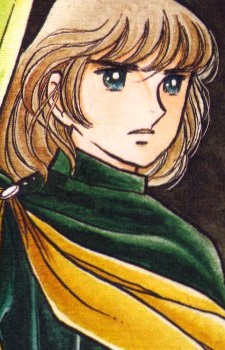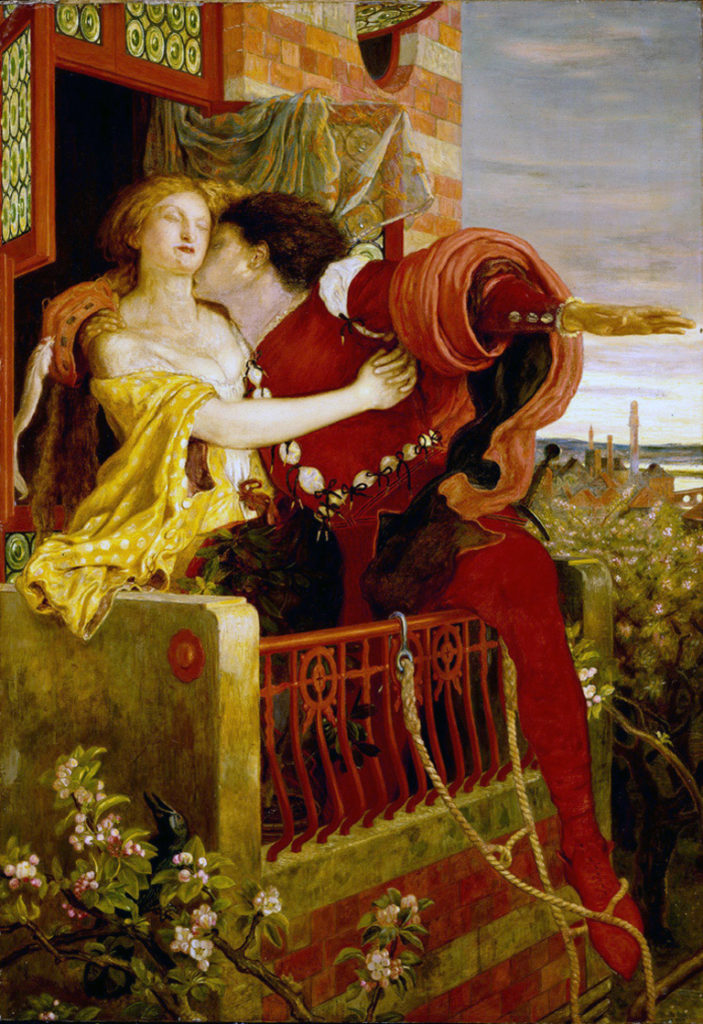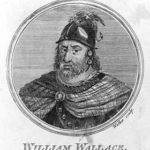Anohito in CCFS
Myth #2: Shakespeare is Related to Albert
Myth #2: Shakespeare is Related to Albert
Anohito in CCFS

Why William Albert Ardlay Can't be Associated with Shakespeare in CCFS
Cruising the web and the various blogs about Candy Candy Final Story, we encountered many theories about William Albert Ardlay’s character being related to the theme of Shakespeare.
This is despite the fact that at the Livre Paris Book Fair in March 2019, Keiko Nagita told her fans during her interview with Bulle Shojo that she was inspired to write CCFS after reading Daddy Long Legs, Anne of Green Gables, and Princess Sarah. The theme of these novels follow the story plot of an orphan rescued by a benefactor.
In this article, we will show how Albert fans have co-opted the main characterization of Terence Graham Granchester and attributed it to Albert to fit Albert in the Anohito role in the most unreliable way.

Characterization
First, we need to learn what Characterization is in novels.
Characterization is the way in which the author conveys information about a character. Characterization can be given directly when the author tells readers what a character is like, or indirectly when the author shows what a character is like by portraying his or her actions, speech, thoughts. Descriptions of a character’s appearance , behavior, interests, way of speaking, and other mannerisms are all part of the characterization process.
Characterization is a crucial part of making a story compelling. To elicit readers’ interest and move them, characters need to appear real. Authors achieve this by providing details that make characters individual and particular. Good characterization gives readers a strong sense of the characters’ personalities and complexities; it makes characters vivid, alive and believable.
In CCFS, we can recognize easily the process of Characterization for each character created by Keiko Nagita.
We have the altruistic, tomboy nurse (Candy, the protagonist); the generous, mysterious traveller, animal lover, and businessman (Albert); the lover with a green thumb for roses (Anthony); the dandy and fashionable boy (Archie); the inventor boy (Stear); the cute and fearful fashionable girl (Annie); the Shakespearean actor (Terence Graham, son of Duke of Granchester); the rich, spoiled evil siblings ( Eliza and Neil); the well educated and shy student (Patty); the good and kind-hearted Catholic teachers (Miss Pony and Sister Lane); the stern and impassive Ardlay matriarch (Aunt Elroy); and the unrequited lover (Susanna Marlowe).
Now let’s focus on the Characterization of the two characters at issue.
William Albert Ardlay’s Characterization

Physical description: Tall, long blond hair then turned darker, sky-blue eyes; gentle voice.
Social and cultural situation: At first he was portrayed asa homeless, vagabond an animal lover, and a traveller. As the novel develops, he was portrayed as a well-educated, rich businessman who belonged to one of the richest families in the USA.
Psychology: He’s a kind young man, very positive, very calm, and very generous.
Behaviors: This character is mysterious. He loves to travel and to be free. He’s a great animal lover and a compassionate human being. Until he lost his memories, he used to appear and disappear.He had certain secrets to reveal.
Terence Graham Granchester’s characterization

Physical description: Tall, long chestnut hair, greenish blue eyes; deep voice; gentle smile.
Social and cultural situation: This character is the son of Duke of Granchester, an English aristocrat. He was portrayed as an aloof young boy when he was first introduced in the story.He had no friends. He was very well educated and got good marks at school. He was very interested in studying Shakespeare’s plays. Ultimately, he decided to become an actor.
Psychology: He’s a misanthrope.He prefers to be alone. He loves reading and studying Shakespeare’s plays, and he dreamt of performing on a stage in a theater. He suffered from his father’s cold attitude toward him, and he missed the presence of his mother, who lives far away from him. He felt rejected by his parents because he was born out of wedlock.
Behaviors: He’s very moody and unpredictable.He can be angry, aloof, cold, and jealous;, severe one moment, but he could switch his mood and behavior quite easily and be sweet, noble, kind-hearted, thoughtful, and generous.
As we can see, the characters Albert and Terrence are quite different from each other. They have their own peculiarities and features precisely as expressed by the author. Shakespeare, in particular, is a Terry trait.
Despite their distinct characterizations, some Albert fans insist that the Shakespeare theme can be easily associated to Albert’s character in CCFS.
We are about to debunk these false Albert fans myths.

1. The Shakespeare’s books in Candy’s studio are Albert’s because he shares the name William with the famous playwright William Shakespeare.
In CCFS, Mr William Albert Ardlay was called simply Mr Albert, or just Albert most of the time. After the revelation of his identity to his adoptive daughter Candy, he introduced himself as William. Making a link between William Albert and William Shakespeare just for the sake of a name appears fanciful, imaginary, and pretentious because Shakespeare’s full name is just William and not William Albert, a composite name. Nothing in CCFS even ties Albert the character or his name to Shakespeare in any way. So this theory doesn’t stand and can’t be supported by any consistent proof.
On the contrary, Terence Graham was portrayed by Nagita as a Shakespearean actor in CCFS. Terry was known for his roles in King Lear, Romeo and Juliet, and Hamlet. Furthermore, he was often portrayed reading Shakespeare’s plays.He owned the complete series of the Bard’s masterpieces in his Scotland villa. His mother, Eleonor Baker, was a Broadway and movie actress. This character is beyond any doubt related to the theater and the Bard of Avon in the most absolute way.
2. Albert’s triple roles mystery in the novel can be compared to William Shakespeare’s identity mystery.
As the novel develops, we discover the mystery of Albert’s role in Candy’s life.
He’s the Prince on the Hill who young Candy met when she was six years old. he’s Albert, the vagabond friend who rescued Candy and saved her life. He’s Great Uncle William, the man who adopted Candy and welcomed her into the Ardlay family.
The novel follows this mysterious path. At the end, the readers get the revelation and the resolution of Albert’s hidden identity.
In contrast, William Shakespeare’s mysterious identity has never been discovered nor proven.

According to most historical researchers, the possible candidates for Shakespeare’s true identity are:
- Ben Jonson (1572-1637): playwright, poet.
- Christopher Marlowe (1564-1593): playwright, poet and translator.
- Francis Bacon (1561-1626): writer, philosopher, politician.
- Edward de Vere (1550-1604) earl of Oxford, English peer and patron of the arts during Elisabeth 1 era.
- Michelangelo and John Florio (1515-1572(?) / (1552-1626): Michelangelo being a protestant priest skilled as a notary, escaped the Inquisition and was Jane Gray’s tutor at the English court.
- John Florio: his son, was the linguist and translator at the French Embassy in England and the author of the first Italian-English dictionary, “A world’s of words”. He was also the Italian translator of The Montaigne’s Essays, andthe Italian, Latin and Greek tutor during the reign ofElisabeth I in her court.
As showed above, the major suspects behind Shakespeare’s real identity are poets, playwrights, translators and also a member of the English court. Not a single traveling adventure seeker or businessman have ever been considered as a choice. (And this is only if the theory is true that Shakespeare was a pen name and a false identity.)
As just for a curiosity, among the list of people who might Shakespeare’s alter egos, it appears that Keiko Nagita took the last name of Christopher Marlowe, to create Susanna Marlowe’s character. Susanna Marlowe, of course, was Terence’s actress colleague who played the key role in Candy and Terry’s separation. What’s more, the name Susanna was also William Shakespeare’s daughter’s name. Again, we don’t have any Shakespeare reference at all for Albert, but plenty of very strong and reliable Shakespeare references linked to Terence Graham’s character.
So we conclude confidently that the comparison of William Albert Ardlay’s triple-hidden roles with Shakespeare’s mysterious identity theory is a very weak argument. It has no basis at all.
On the other hand, we can undoubtedly relate Albert’s triple-roles in CCFS to Daddy Long Legs, as we find the same plot device in Jean Webster’s novel, and also the resolution of the mysterious benefactor’s identity at the end.
3. Albert is associated with Shakespeare because he sent the Romeo and Juliet costumes to Candy for May Festival.
“Romeo and Juliet” is one of William Shakespeare’s most famous plays. The drama is very old; the story dates back to 1300 as Dante Alighieri stated in the Divina Commedia (canto VI, purgatory). The plot was subsequently taken by Masuccio Salernitano in 1476 and adapted in Siena.

Later on, it was used for another adaptation by Luigi da Porto in 1503, and again by Matteo Bandello in 1554. Shakespeare was the last to borrow the story for his play, and he added his own adjustments to the story. The story of the two star-crossed lovers is so very well known all over the world.
Growing up and being raised as a well-educated young man in one of the richest family in America, there is no doubt that William Albert Ardlay had studied and learned about the famous tragedy. This is evident in his gift of the Romeo & Juliet costumes to Candy as her disguises for the May Festival.
But we learn that Candy’s character, raised in a modest orphanage, was also aware of the existence of the play Romeo and Juliet. She knew what the costumes were about as soon as she opened the gift box. Therefore we can infer that the knowledge of the Shakespearean play Romeo and Juliet is not Albert’s exclusive attribute to connect him to Shakespeare, but something applicable to other characters too due to the popularity of the drama.
4. Albert’s role as a playwright in Rockstown scene.
Many bloggers point to the complexity of Albert’s role for the scene in Rockstown. They say that he behaved like a playwright (as Shakespeare was), like the master hidden behind the scenes who moved the strings to make Candy and Terry’s reencounter happening again.

If we’re going to consider Albert as a playwright during the whole novel, we need to take in consideration that he should be also a playwright during Candy and Terry’s separation in New York. On that occasion, we don’t have any reference to Albert’s actions being involved in the decision Candy and Terry made for Susanna Marlowe’s sake.
So, we at the same time, the Rockstown event is to be considered within Albert’s characterization of a generous, supportive, understanding friend as he was conceived by the author.
In this perspective, we stay faithful and consistent with the character without distorting his primary characterization. It was not Albert the mind who moved the strings of destiny, but it was life in its essence which just happened.
5. Candy said Mr Albert was a good actor in her unsent letter to Terry.
“Luckily Mr Albert is not into acting, he’s great to at performing! He would have been a big rival for you on the stage, you know!”
Page 202-203, CCFS Italian edition.
In her unsent letter to Terry, Candy praised Albert’s ability to act under a different identity and how his skills prevented her from discovering he was the mysterious Great Uncle William. Many Albert fan blogs have taken this passage to literally mean Albert was a true actor as much as Terence Graham, who acted for passion and for a living.
In the novel, we never witnessed any kind of interest or moment in which Albert dedicated himself to the study of literature and theater. His characterization was about traveling, being free, accumulating experiences abroad, returning to his duties as head of the Ardlay Family, and later, engaging in businesses. Comparing a good job of disguise, as Albert had done while hiding his identity to Candy, to an actor on stage who performed professionally, is not only farfetched but very pretentious too. Anybody can be in disguise and perform well without be discovered; but not anybody can be an actor on stage because you need to study and dedicate yourself to that career.
In this perspective, the idea of Albert being an actor in Candy’s mind was nothing more than a private joke she made in reference to Terence’s profession. So we conclude that in this particular circumstance, Albert behaved like an actor and deceived out of necessity, and not for the sake of a professional career-oriented performance.
6. Albert was Hamlet in CCFS.
In the novel, Albert’s character was shown at the beginning of the story as a homeless vagabond, an animal lover who could never settle in just one place, but who moved around mysteriously. He often appeared and disappeared; nobody knew his origins, last name, or official profession. He was a kind of ineffable man. Many bloggers borrowed this trait to make Albert the metaphoric and mysterious Hamlet of CCFS.
Let’s just take a look at William Shakespeare’s Hamlet play.
The tragedy is about Prince Hamlet, who learned from his father’s ghost that the present king of Denmark, his uncle Claudius, had murdered him after seducing his wife Gertrude, Hamlet’s mother. The father’s ghost commanded Hamlet to take revenge. The entire plot of the story was about Hamlet pretending to go mad, to be torn between life and death. He was a pessimist, introspective man. His indecision came from the contrast between his urge to act and the necessity to think.
For Hamlet, life was struggle, suffering, fear, and death. He preferred to die like dreaming or sleeping, but he was afraid of the unknown after death. He was way too much into introspection and overthinking, so he could not decide.
Was William Albert Ardlay’s character true to Hamlet in CCFS?
The author described Albert as a positive, generous, kind-hearted man. At a young age, oppressed by the compelling duties he would have been faced as the head of the Ardlay family, he decided to experience freedom by being himself. He felt safe enough to leave the family behind because of the Ardlays’ economical stability, and because of the constant presence of his right-hand man George Johnson. Thanks to this loophole, he travelled to far away countries such as Africa, England, and Italy. Losing his memory during the train accident in Italy brought him back to Chicago, where he met Candy again, at the time when she was studying to become a nurse. Even in the challenging moment as an amnesiac, Albert was always portrayed as a positive and bright character, not fearful of losing his faith in regaining back his memory.
As we can see, we don’t have any reference to Hamlet’s complex attitude when talking about Albert. Albert had aways faced challenges with positivity and faith, as his characterization shows.
So, who is the true and unique Hamlet in CCFS?
Let’s go back to Candy’s unsent letter to Terry.
Congratulations for Hamlet’s great success. Upon great demand, you are performing the show one after the other, aren’t you? I read different articles which spoke about you enthusiastically:
“This is the Hamlet we have always desired to watch!”
“A performance beyond any other expectation!”
“ Terence’s Hamlet will arrive to England, too!”
Page 202, CCFS Italian edition.

As we learn from Candy, Terry returned to Broadway after the dark period of Rockstown and made it to be back to the top. He succeeded in playing the Hamlet role so masterfully that reviews praised him incessantly. Presumably, he became sober again and took care of Susanna Marlowe, as this was his duty to fulfill. But in his letter to Candy, in which he revealed that his feeling for her had not changed, and us learning that he never married Susanna despite his living with her and being engaged to her, we can sense the gloomy times he had lived during those years separated from his true love. The complexity of a character such as Hamlet, along with his internal struggle and turmoil, have been the same as Terence’s. This was evidenced by Terrence’s outstanding performance of Hamlet on stage, and the awareness both by his audience and the press.
It was also Keiko Nagita herself who let us know that she was inspired by Hamlet. She informed us about Terry’s life during the Livre Paris Event as shown in this video:
Consequently, we can state beyond any doubt that the only and unique Hamlet in CCFS is Terence Graham Granchester. This is not only because he played the role marvelously on stage, but above all, because he lived all those feelings of despair, struggle, fear, and indecisions deep inside his soul like the Prince of Denmark. We don’t have any kind of reference for William Albert Ardlay’ s feelings of indecision, struggle and hopelessness, as his characterization shows the opposite.

Conclusion
Having taken into account any possible inference about William Albert Ardlay being associated to Shakespeare and finding none, we can peacefully state that the Shakespeare theme in CCFS is related only and exclusively to Terence Graham Granchester because this was his Characterization in the whole novel.
Any kind of distortion and appropriation of Terence’s characterization towards W. A. Ardlay would serve to fit some fanciful and unreliable theories only for the sake of Albert fans’ desires and satisfactions.
Based on theproof shown above, we can declare that such behavior states for itself who the authentic Anohito is in CCFS.


*All guest comments and replies will be posted upon Admin approval.








7 Comments
Great analysis and based claim. Stating Albert is related to Shakespeare in anyway as a character is hard to justify. Terry is always the representation of Shakespeare in Candy Candy. He read/love Shakespeare, dress as Romeo, on stage played many Shakespeare main characters. As son of the Duke in era, most likely he has 1/2 royal blood and since he is the oldest son of Duke, it’s almost certain he will inherit the Duke title from his father. The argument that Shakespeare is any reference related to Albert is too weak.
Bertie Shakespeare Drew is the name of a character from the Anne of Green Gables series.
Bertie’s mother thought he should have won the poetry prize because of his middle name is Shakespeare.
Maybe “Bertie” is the name that inspired Nagita to call Albert “Little Bert”.
Gracias por compartir este maravilloso y explícito análisis. Siempre he creído que tratar de encajar al personaje de Albert con Shakespeare es retorcido y absolutamente fuera de lugar. No cabe duda que se necesita la ignorancia para creer que Albert está relacionado con el dramaturgo inglés así como negar la relación verdadera que tiene con el personaje de Terry.
Un Análisis muy bien realizado, y tan completo que reflejas muy bien la estructura de los personajes y de una manera neutral que hace apreciar mejor la caracterización de ellos, y lo que Nagita nos refleja realmente en su obra…
Excelente Análisis,. Gracias.
Super analisis. Es lo mismo que yo pienso, caracterización de personaje no sé puede ignorar. El resto es necedad.
Y este video no lo había visto. Maravilloso còmo siempre. 💓💓😍
OmG This is a perfect analysis.♥️
What a pleasure it is to read when you have knowledge of the subject, perfection in describing Albert and Terry, I’m SO happy with this analysis and I agree on everything, omg congratulations 👏🏼👏🏼👏🏼 Of course Terry is tied with shakespeare in everything, thank you ladies.♥️
OMG!!! IT IS AN EXHAUSTIVE AND VERY WELL DONE ANALYSIS!!!!! I AGREE COMPLETELY WITH YOU, ALL BASED IN WHAT WE READ IN CCFS, AND WHAT WE KNOW ABOUT THE CHARACTERS. IT IS A PLEASURE TO READ YOU!!!. THANKS.